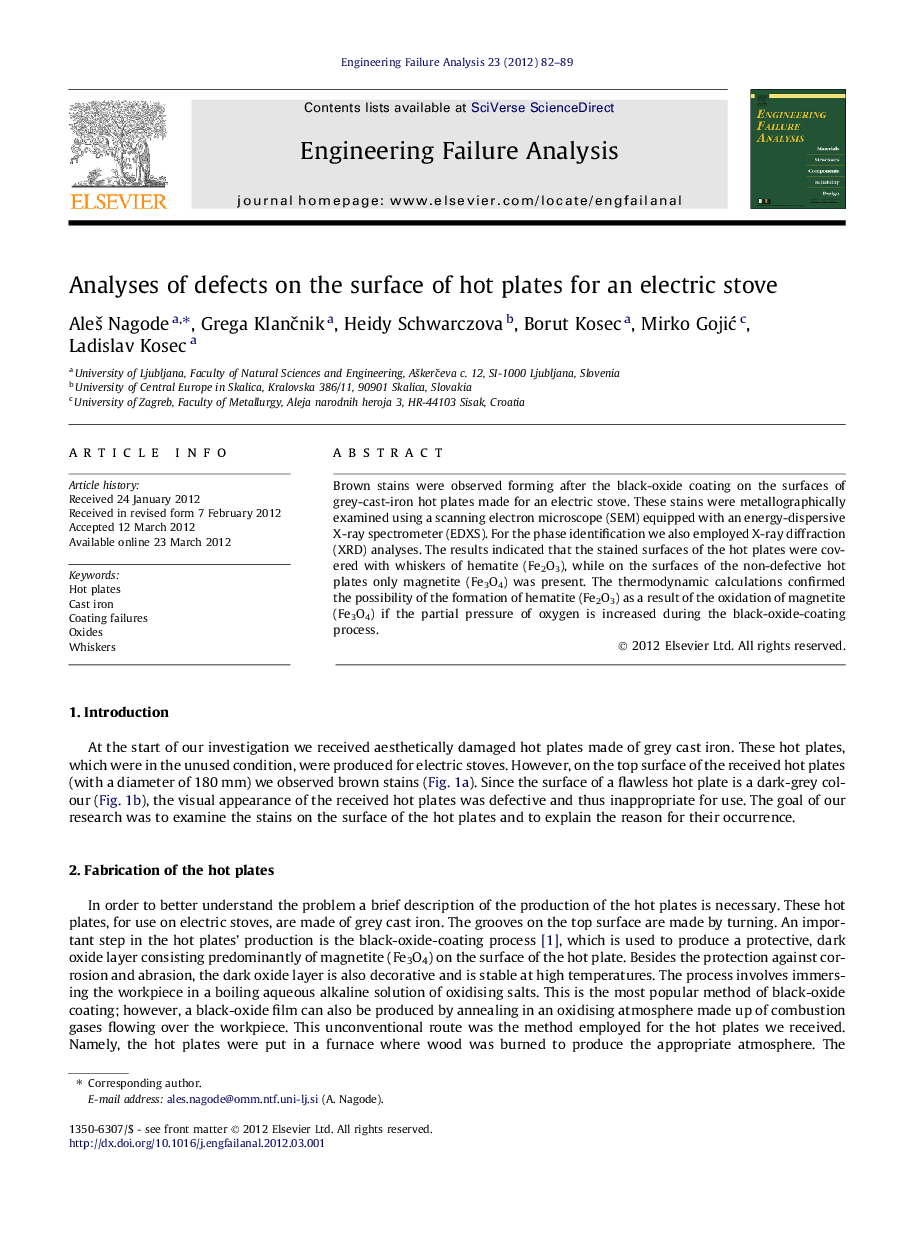| Article ID | Journal | Published Year | Pages | File Type |
|---|---|---|---|---|
| 769825 | Engineering Failure Analysis | 2012 | 8 Pages |
Brown stains were observed forming after the black-oxide coating on the surfaces of grey-cast-iron hot plates made for an electric stove. These stains were metallographically examined using a scanning electron microscope (SEM) equipped with an energy-dispersive X-ray spectrometer (EDXS). For the phase identification we also employed X-ray diffraction (XRD) analyses. The results indicated that the stained surfaces of the hot plates were covered with whiskers of hematite (Fe2O3), while on the surfaces of the non-defective hot plates only magnetite (Fe3O4) was present. The thermodynamic calculations confirmed the possibility of the formation of hematite (Fe2O3) as a result of the oxidation of magnetite (Fe3O4) if the partial pressure of oxygen is increased during the black-oxide-coating process.
► Brown stains on the hot plates for the electric stove have been analysed. ► The stains are caused by whiskers that were growing from the top oxide layer. ► Whiskers are from hematite, while non-defective surface is from magnetite. ► For proper black coating a control of the partial pressure of oxygen is necessary.
